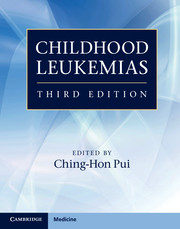Book contents
- Frontmatter
- Contents
- List of contributors
- Preface
- Section 1 History and general issues
- Section 2 Cell biology and pathobiology
- Section 3 Evaluation and treatment
- Section 4 Complications and supportive care
- 29 Acute complications
- 30 Late complications after leukemia therapy
- 31 Therapy-related leukemias
- 32 Infectious complications in leukemia
- 33 Hematologic supportive care
- 34 Pain management
- 35 Psychosocial issues
- 36 Nursing care
- Index
- Plate Section
- References
30 - Late complications after leukemia therapy
from Section 4 - Complications and supportive care
Published online by Cambridge University Press: 05 April 2013
- Frontmatter
- Contents
- List of contributors
- Preface
- Section 1 History and general issues
- Section 2 Cell biology and pathobiology
- Section 3 Evaluation and treatment
- Section 4 Complications and supportive care
- 29 Acute complications
- 30 Late complications after leukemia therapy
- 31 Therapy-related leukemias
- 32 Infectious complications in leukemia
- 33 Hematologic supportive care
- 34 Pain management
- 35 Psychosocial issues
- 36 Nursing care
- Index
- Plate Section
- References
Summary
Introduction
Because cure rates for children with acute lymphoblastic leukemia (ALL) have improved since the 1970s, concern regarding late treatment sequelae plays a prominent role in contemporary therapy planning. Earlier reports described long-term complications after relatively homogeneous, less-intensive chemotherapy given with cranial or craniospinal irradiation for central nervous system (CNS) preventive therapy. Recognition of new prognostic clinical and biologic features has permitted risk-directed treatment that now cures 80% or more of children with ALL. In particular, recent trials have focused on intensifying systemic chemotherapeutic agents that control ALL in the CNS in an effort to eliminate cranial radiation and its associated late effects. Continued surveillance of the survivor population is important to define long-term health outcomes after these modern, intensive therapies.
Similarly, the long-term survival of children with acute myeloid leukemia (AML) has improved substantially in the last decade with the use of more intensive chemotherapy regimens and allogeneic hematopoietic cell transplantation and advances in supportive care. Today, 50–60% of children with AML are cured of their disease. The increasing numbers of long-term survivors of AML likewise mandate the evaluation of late treatment sequelae and their effect on morbidity and mortality.
- Type
- Chapter
- Information
- Childhood Leukemias , pp. 701 - 722Publisher: Cambridge University PressPrint publication year: 2012



